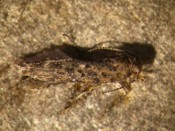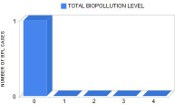BINPAS Frequently Asked Questions
Why to register?
Registration to BINPAS is open for all willing to contribute with their data. Registered users have access to additional services such as user communication center, news provider, track of changes, etc. BINPAS data is also available for non-registered users (guests), which can view records, reports, diagrams, maps, etc., can not participate in data contribution and method application.
What is an assessment unit account?
An assessment unit account (AU) is an area with clear geographical boundaries. AU can cover natural or semi-natural aquatic or terrestrial environments. AU can cover natural or semi-natural aquatic or terrestrial environments. The size of the AU should relate to a manageable area decided by the contributor based on a purpose of the assessment. For example, in the aquatic environment an AU may be a coastal area, estuary, lake, marina, fish farm, marine protected area, etc. In a terrestrial realm this may be a wooded region, wetland, mountain valley, nature reserve or garden.
What is an assessment period?
The assessment period (AP) entry stores the years over which the study took place as well as additional information on basic environmental parameters, e.g. salinity, which could change over AP. The earliest AP usually is considered to be the baseline from which further assessments can be compared. Normally, an AP would range from one year to a decade and may be decided by, for example, an appropriate national or international authority.
How many assessment periods can be defined within an assessment account?
The assessment period should be determined by the contributor for every assessment performed. The assessment can be made for the same AU for one or more AP.
What is a species assessment account?
A species assessment account stores an assessment (abundance and distribution range, impacts on communities, habitats and ecosystems) for a species in a defined AU for a certain AP.
What data is suitable for BINPAS?
For a species assessment it can be used raw datasets and extractions from the published literature. However, we advise using the various, multiple data sources. In this case the method minimizes possible biases categorizing the available information, so the output will be more impartial comparing to the input data.
How BINPAS will store the underlying data upon which the assessment rankings were made?
Underlying data is stored in the form of comments and references. The assessment cannot be completed without providing underlying data, these text fields are obligatory in BINPAS.
What are available assessment scenarios?
BINPAS allows for eight possible assessment scenarios, of which Scenario I is compulsory, while others may be applied depending on the purpose of a study: One alien species (AS) in one AU for one AP; One AS in one AU for several AP; One AS in several AU for one AP; One AS in several AU for several AP; Several AS in one AU for one AP; Several AS in one AU for several AP; Several AS in several AU for one AP; Several AS in several AU for several AP.
Can I try BINPAS without meaningful changes?
Demo-users can try-out BINPAS and its capabilities without any risk of compromising the underlying database. They use a separate “sandbox” application (http://www.corpi.ku.lt/databases/binpas/demo), where data are stored temporarily.
What is a level of certainty?
Each contributor is required to provide a level of certainty while making assessment.
For the abundance and distribution range the level of certainty is expressed as either “High” if the species abundance and distribution range was studied in the entire assessment unit, “Medium” if the species abundance and distribution range was studied in a part of the assessment unit and extrapolated to the entire system by expert judgment, and “Low” if it is known that species is recorded in the in the assessment unit but the species abundance and distribution range was not studied.
For impacts on communities, habitats and ecosystems the level of certainty is expressed as either "High" if the impacts were documented by field and/or experimental studies for the given assessment unit, "Medium" if the impacts were documented by field and/or experimental studies for a part of the assessment unit and extrapolated to the entire system by expert judgment, and "Low" if the impacts were not documented neither by field nor by experimental studies, expert knowledge of the species impact based on data from studies made elsewhere was applied.

